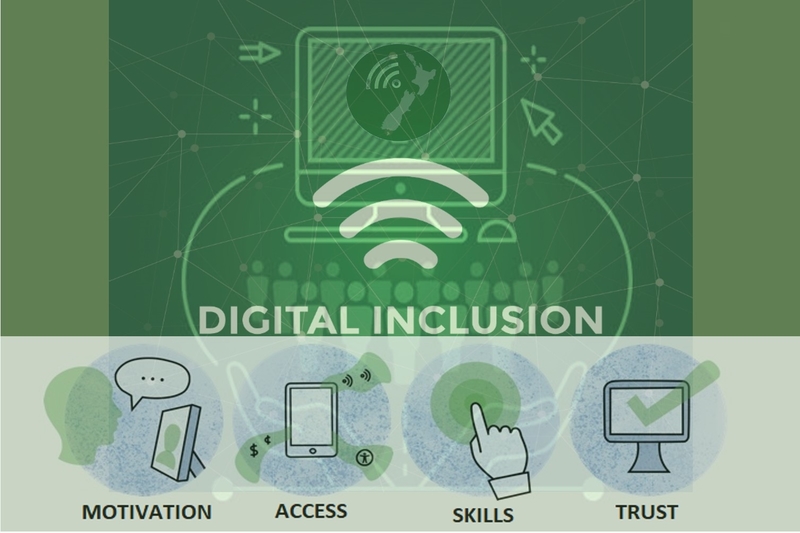
Disabled people continue to be disadvantaged by their limited ability to engage with digital and online services, according to a new report: Digital inclusion user insights – Disabled people. The Department of Internal Affairs (DIA) estimates that around 20% of all New Zealanders are digitally excluded. This essentially means that this community does not have the skills or access needed to participate in the online world.
The purpose of this research was to understand the perceptions and feelings about digital inclusion from people with disabilities as they go about their daily lives. The goal was to understand the key pain points for individuals, what they liked about the current system and what improvements could be made to ensure a more equitable digital environment for all.
For disabled people, one of the most vulnerable communities, this research highlights how the experience of engaging with digital services could be leaving disabled people behind, increasing the number of people who cannot easily and confidently use the internet and online services.
Adam Stapleton, Programme Delivery Manager, Digital Public Service branch at DIA said, “The report highlights issues that have impacted disabled people’s ability to easily and confidently use the internet and digital services. COVID-19 has exacerbated some of these issues and yet also produced an environment where new insights to improve digital inclusion can be embraced and used. This is a real opportunity to create traction.”
The research report gives disabled people a voice and outlines their lived experience in terms of being digitally enabled. It outlines 5 key findings which could help improve the design of websites and online services, making an impact on how disabled people experience the digital.
The report includes insights from disabled people and 5 recommendations for Government on how to increase digital inclusion.
- a need to enforce or incentivise application of the Web Accessibility Standard
- a call to increase the co-design of accessible, digital services
- strong demand for digital skills training from within the disability community
- demand from the disabled community for affordable access to digital tools and technology
- a call to explore employment and post-employment support for the disabled community.
The findings highlight that vulnerable communities like those of the disabled people community will continue to be disadvantaged by their ability to engage or not engage with digital services. The report shows that government agencies can design and provide services differently to be more inclusive for disabled people.
Making digital inclusion a priority
In 2019, the New Zealand government laid out the Digital Inclusion Blueprint and Action Plan, a vision and roadmap working to ensure that all New Zealanders can participate in, contribute to and benefit from the digital world. The Blueprint sets out 4 roles for government in building a digitally included New Zealand: lead, connect, support and deliver.
That vision continues to come to life in the 2020 Digital Inclusion Action Plan which outlines the range of government activities underway and planned to make a more digitally inclusive New Zealand. For example, focusing on closing digital skills gaps for whānau (extended families and communities), iwi (Maori community or people) and small businesses to support them in being able to better engage digitally. Another key part of the work is the user experience research work — a series of 7 user experience reports to understand the perceptions and feelings about digital inclusion.
The goal is to understand the key pain points for individuals of vulnerable communities. What they liked about the current online environment, what they do not, and what improvements could be made to make it a more equitable digital environment.
These reports are more than words on a page. These reports will be used to inform, advise and help people in government and the community who design and provide services so that they can be more inclusive for disabled people.
“Closing the digital divide is something we all need to work together on. Reading the report, consider how to use the findings applied to ongoing or new digital strategies is going to be key to creating the traction needed for disabled people to get the benefits of the internet, connectivity and connection,” confirmed Adam Stapleton, Programme Delivery Manager, Digital Public Service branch at DIA.
















